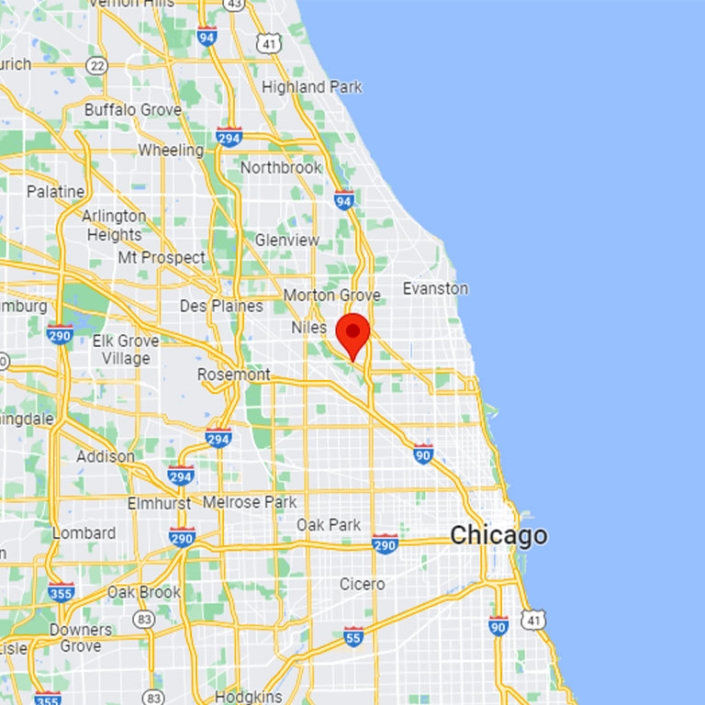Dental Crowns and Bridges

When you decide you want to restore your smile due to missing or damaged teeth, crowns and bridges in Chicago, IL, may be recommended. Dental crowns and bridges are one of the most commonly recommended treatments for smile restoration, and the results can be life-changing. Take a look at a few things to know about dental crowns and bridges.
What are dental crowns?
Dental crowns are “caps” made of porcelain, ceramic, certain metals like gold or nickel, or a blend of materials. These caps are custom-made to fit over an existing tooth to preserve it or change its appearance. Oftentimes, a crown is placed over a tooth that has sustained damage due to decay. However, crowns may also be installed for more cosmetic purposes. For instance, if a tooth is smaller than the rest, a crown can be placed to make the teeth more evenly sized and shaped.
What are dental bridges?
Dental bridges are cosmetic dental appliances that are placed between anchoring teeth to fill in gaps where a tooth or two are missing. For example, if you have lost a tooth between two molars, a bridge can be made with crowns on either side to make your smile appear complete and maintain the appropriate bite. Bridges can be made out of ceramic and other materials, just like crowns.
How Dental Crowns and Bridges Are Often Combined
Dental crowns and bridges are frequently combined to restore function and aesthetics in cases where multiple adjacent teeth are missing or significantly damaged. In the context of a bridge, crowns serve as anchors (abutments) on either side of the gap left by missing teeth. The bridge spans the gap, utilizing the crowns as support while incorporating prosthetic teeth (pontics) to fill the space. This combination of crowns and bridges provides a durable and natural-looking solution for replacing missing teeth and improving overall oral health.
What to Expect During Crowns and Bridges Procedures
First, the dentist will conduct a thorough examination, possibly including X-rays, to assess the condition of your teeth and gums. A treatment plan will be discussed to outline the number of crowns and/or bridges needed and the materials that you prefer or that are most suitable for your needs and budget. From this point, several steps will occur.
1. Tooth Preparation
For crowns, the affected tooth is shaped to accommodate the underside of the crown. This may involve removing a portion of the tooth structure to ensure a proper fit. For bridges, the adjacent teeth (abutments) are prepared in a similar way.
2. Impressions
Impressions of the prepared teeth are taken to create accurate molds for the fabrication of the crowns and bridges. These impressions ensure that the prosthetics fit seamlessly with your existing teeth.
3. Temporary Restorations
While your permanent crowns and bridges are being custom-made in a dental laboratory (which can take a couple of weeks), temporary restorations are placed to protect the prepared teeth and maintain functionality and appearance.
4. Fitting and Adjustment
Once your permanent crowns and bridges are ready, they are checked for fit, color, and bite alignment. Adjustments may be made to ensure they feel comfortable and function properly within your bite.
5. Final Placement
After any necessary adjustments, the permanent crowns and bridges are cemented or bonded into place. The dentist will ensure they are securely positioned and provide instructions on how to care for them.
6. Follow-Up
A follow-up appointment may be scheduled to assess the fit and function of your crowns and bridges after they have been in place for a few weeks. This allows any minor adjustments to be made to ensure optimal comfort and performance.
Crown and Bridge Aftercare
Crowns and bridges can be long-lasting restorations with the right level of care and attention. Naturally, some crown materials have a longer life span than others. A few important pointers to keep in mind include:
- Brush at least twice daily, and floss around crowns and bridges.
- Avoid hard foods, like ice or tough foods.
- Schedule regular check-ups to monitor the condition of crowns and bridges.
- Expect some sensitivity in the beginning, but be sure to consult the dentist if it persists.
- Consider using a night guard if you grind your teeth to protect the crowns and underlying natural teeth.
- Maintain a healthy diet to support oral health and the longevity of dental restorations.
- Consult the dentist if a crown or bridge becomes loose, falls off, or if you experience discomfort.
Discuss Crowns and Bridges with an Experienced Chicago Dentist
Looking for a dentist in Chicago, IL who specializes in crowns and bridges? Reach out to the team at Mindful Dental to schedule a consultation.


